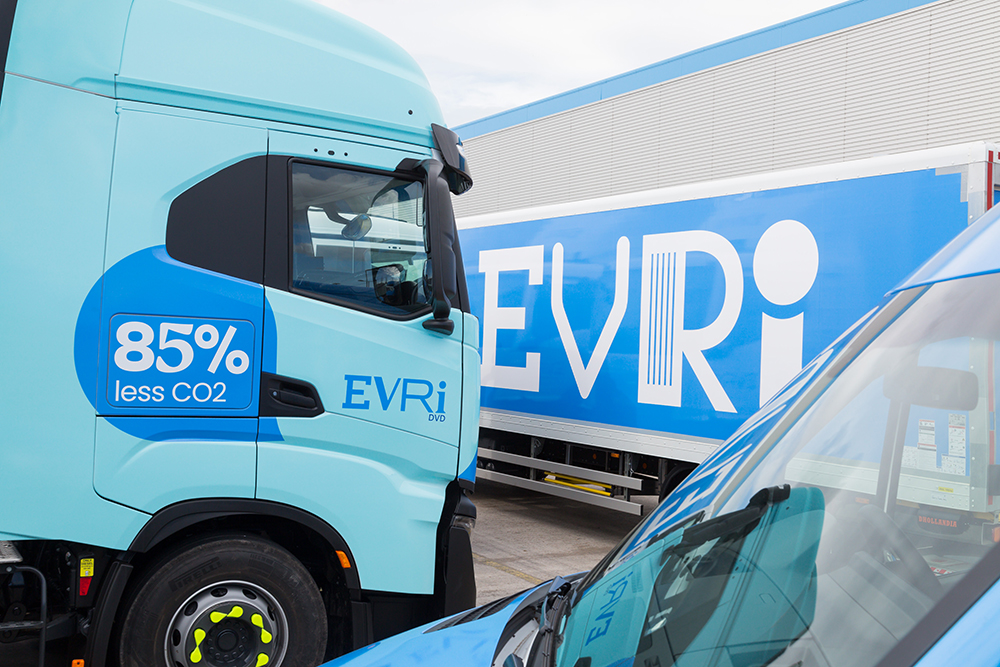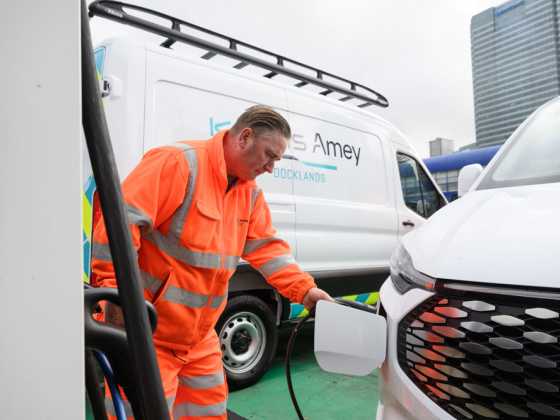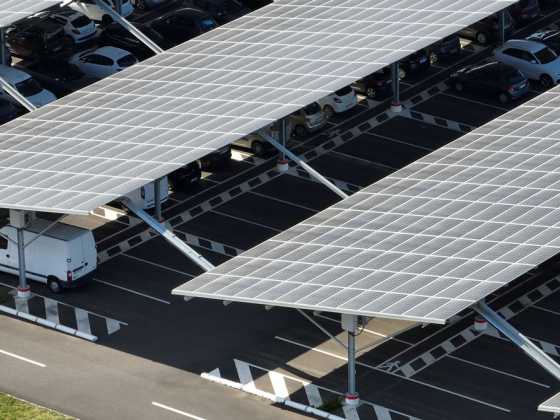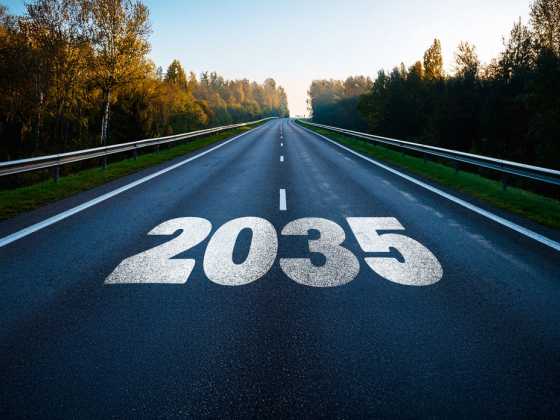Staying committed to green ambitions

Evri – previously known as Hermes – has been committed to creating a sustainable fleet for some time. From bio-CNG trucks, electric vans and cargo bikes, to the establishment of ParcelShops, Evri has addressed multiple angles in its decarbonisation journey. David Landy, head of fleet, discusses the progress made and the barriers still to overcome
You’ve been committed to creating a sustainable fleet for some time now – can you tell us how your fleet decarbonisation journey started?
Evri launched its first ParcelShop in 2012, when the business was known as Hermes – this was one of its first initiatives to cut carbon from the ‘final mile’ by consolidating pick-up and drop-off points. Evri was also one of the early-adopters of bio-Compressed Natural Gas (bio-CNG) in 2018 at the same time it launched an EV fleet in central London, this fleet was in limited numbers at that time. The decarbonisation journey was super-charged with the appointment of myself as head of fleet in 2020 and Nancy Hobhouse as head of ESG in 2021 – since then we have added many more low carbon vehicles into our core fleet as business as usual.
And can you give an overview of your fleet now, in terms of what ‘green’ vehicles you have?
We’re always growing our sustainable fleet when the replacement cycle allows us. Currently, it includes 190 bio-CNG tractor units, 168 electric vans and an increasing number of e-cargo bikes as we aim to deliver 500,000 parcels by e-cargo bike this year. E-cargo bikes have zero tailpipe emissions and are a good solution for some urban routes. We’re also looking at eHGVs and we hope to trial hydrogen vehicles before the end of the year. We also have large depot fleet which has been successfully running on HVO for two years.
Looking back to when you started with your decarbonisation journey, what were the challenges like then and what are they like now?
Technology is the biggest change over the years with advancement in battery capacity creating a range in vehicles which, just a few years ago, wasn’t possible. Now, we’re able to trial them and put them to the test in challenging, real-life environments. Whilst the technology will continue to improve we have to keep a close eye on current and emerging models to make sure that we adopt at the right time to meet our operational needs, we do not want to acquire fleet that compromises our operations in any way. The supply and availability of vehicles is one issue, and another challenge is changing the deep-routed driving habits of experienced drivers who are used to driving with diesel.
We have our own driving academies around the country to help bring in the next cohort of drivers and ensure they haven’t picked up any ‘bad habits’. For us now, due to our driver training programmes, and transport management styles, the alternative fuelled vehicles are embedded at the heart of our operations. For our bio-CNG, we even have our on-site fuelling tanks and lanes to make their operation simpler for our teams.
Can you tell us more about your two electric HGVs?
The two electric HGVs are based at our site in Rugby. The tractor unit is used for limited journeys between a client warehouse and Rugby, one of our main distribution hubs – the routes can be tightly controlled to ensure we’re not going to exceed its range. The particular challenge with electric HGVs is managing the change in driving style; we initially had several reports of drivers ‘feeling sick’ but through education, and better understanding of how these vehicles work, we’re seeing improved performance of these vehicles and greater satisfaction from the drivers as they get used to them. A drawback however is that we cannot use the electric trucks currently to meet the same length duty cycles that we enjoy with our diesel and bio-CNG vehicles due to the stand times on the charging we have. We are also running with light weight loads, but we can see for other operators that overall payload can well be an issue due to the higher unladen weight.
You have 168 electric vans on fleet - how do these compare to diesel vans, in terms of fleet management?
Our electric vans make up around 30 per cent of our van fleet and we have ambitions to grow our EV fleet at our earliest opportunity. The electric vans have a lower capacity in terms of payload and carrying cube, so we made some small changes to the way our drivers load those vehicles. Our planning team are exceptionally good at identifying where we can replace diesel vans with electric vans to ensure we’re balancing efficiency of drivers’ time with efficiency of the vans’ range capabilities. There are some routes, often in rural areas, which have a longer distance between stops and a greater number of miles to cover. We’re hopeful hydrogen could be a solution in those cases and the pace of EV development will allow those challenges to be met. The vast majority of our electric vans are used to pick-up and drop-off parcels at our network of ParcelShops. Typically, a parcel which goes through our network of 8,000 ParcelShops, reduces emissions per parcel by about 45 per cent. Over three-quarters of the UK population live within a 10-minute walk of a ParcelShop – which is another important part in that journey to decarbonise the ‘final mile’.
You’re also moving to cargo bikes for last mile deliveries. What are the benefits and challenges?
We have ambitious plans to triple e-cargo bike deliveries this year to over 500,000. Our latest e-cargo bike site is near Wimbledon and has 15 new bikes which have replaced 15 vans that were previously operating out of the depot – they’ll be able to deliver around 1,500 parcels per day. The bikes reduce tailpipe emissions by 100 per cent compared to diesel vans and will see more than a 75-tonne reduction in CO2 per year as a result. In addition to reducing Evri’s carbon emissions, the bikes also reduce noise pollution and congestion. Their space efficient design allows them to navigate the city streets easier and deliver an often-quicker service to customers in built up urban areas. The project has also enabled the recruitment of local couriers who may not have vehicle access, providing increased opportunities for young adults and a wider community demographic.
What positive environmental impact has greening your fleet had, in terms of carbon savings?
Our carbon per parcel has reduced by 10 per cent since last year and we have reduced our operational carbon my almost a third since our baseline of 2020/21. We measure scope 1, scope 2 and all of scope 3.






